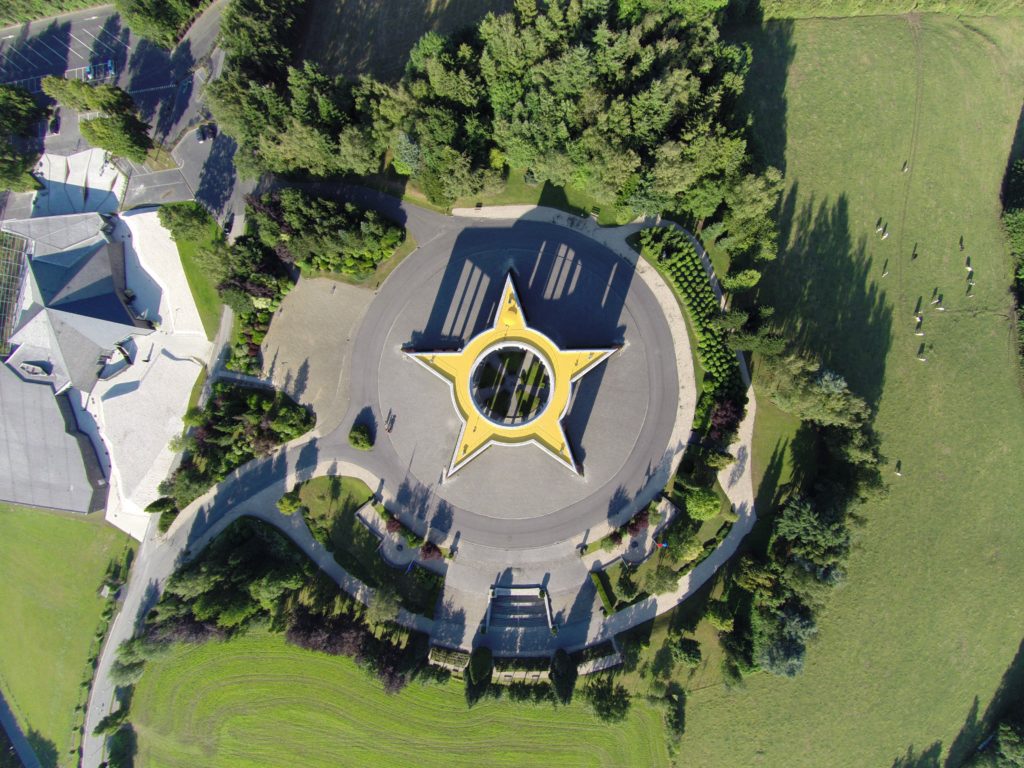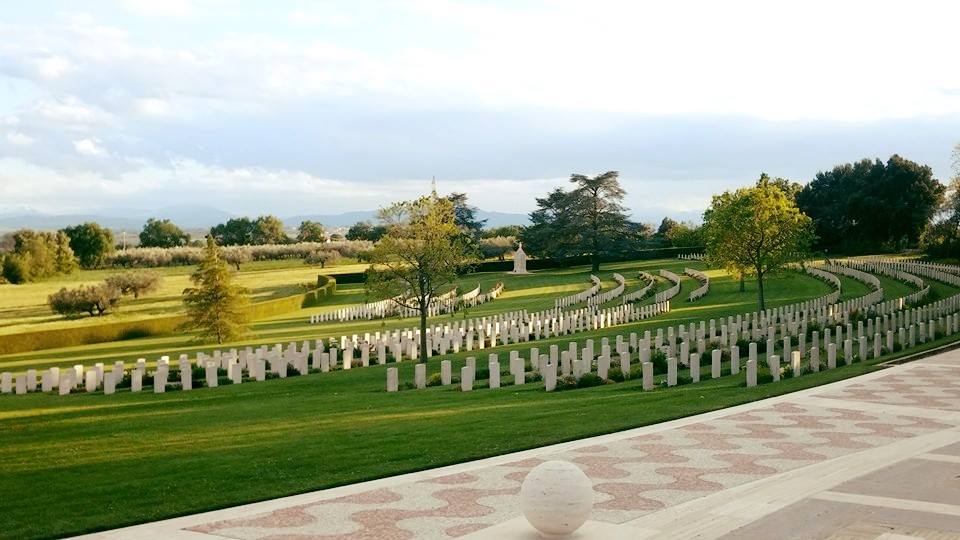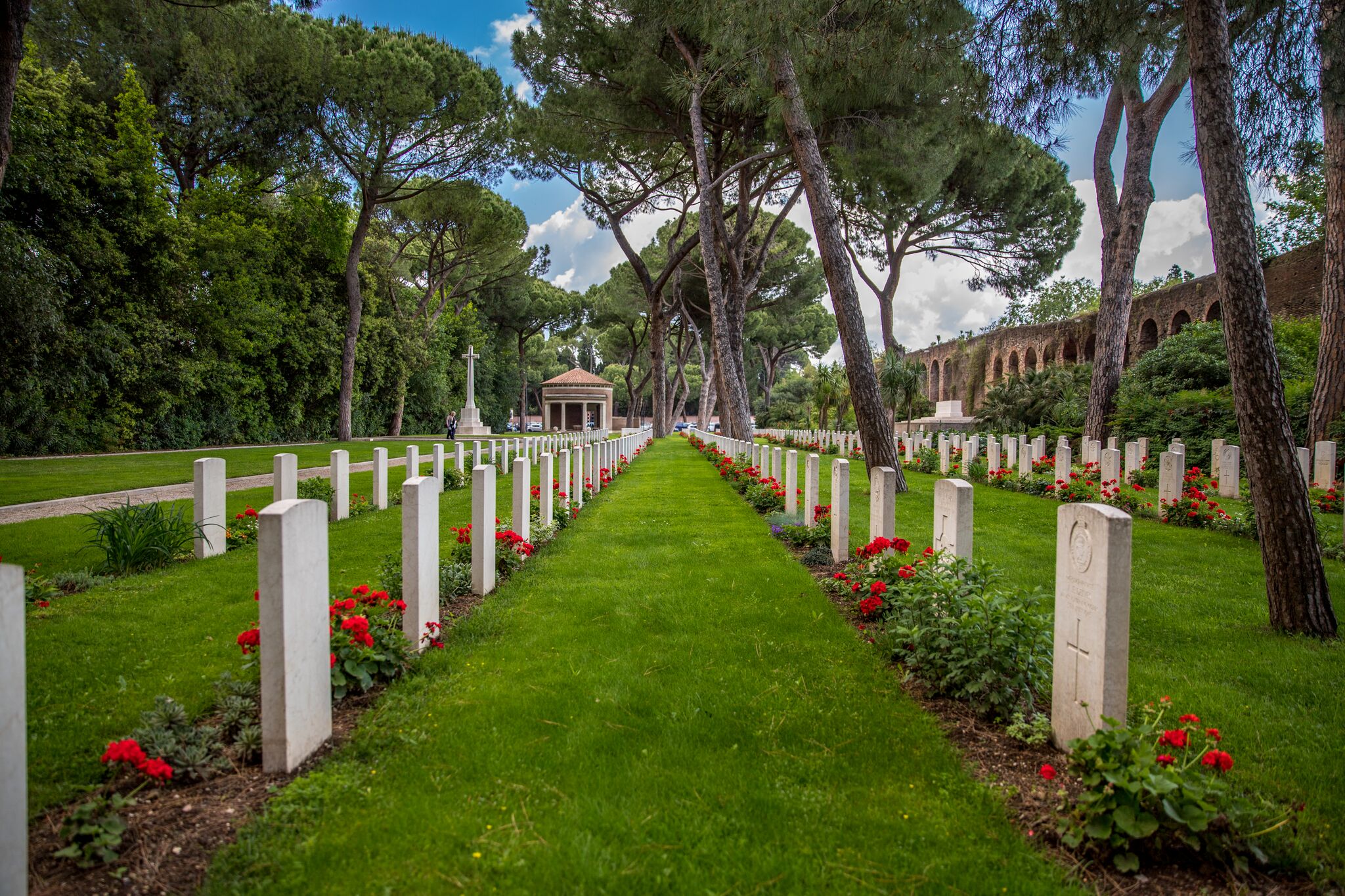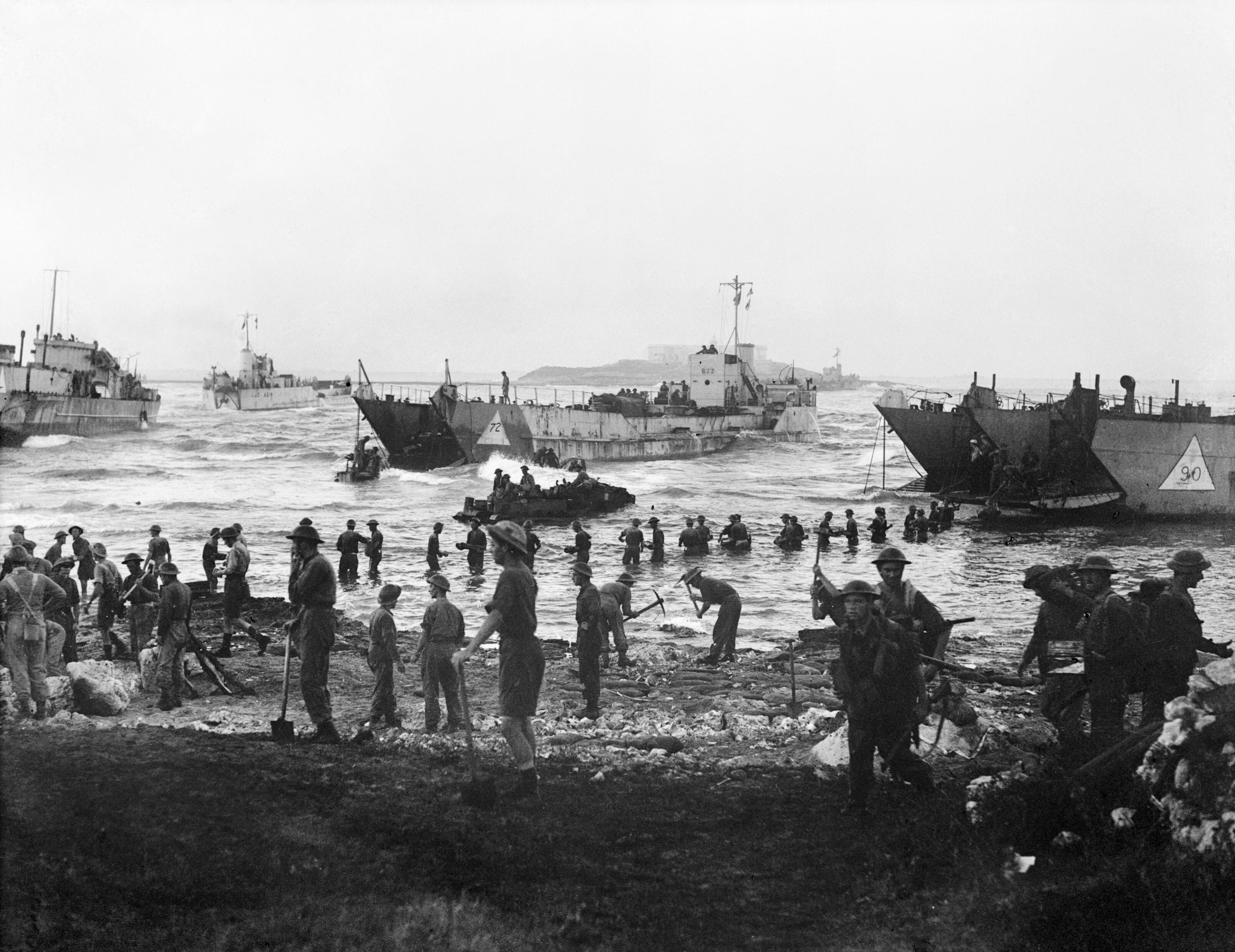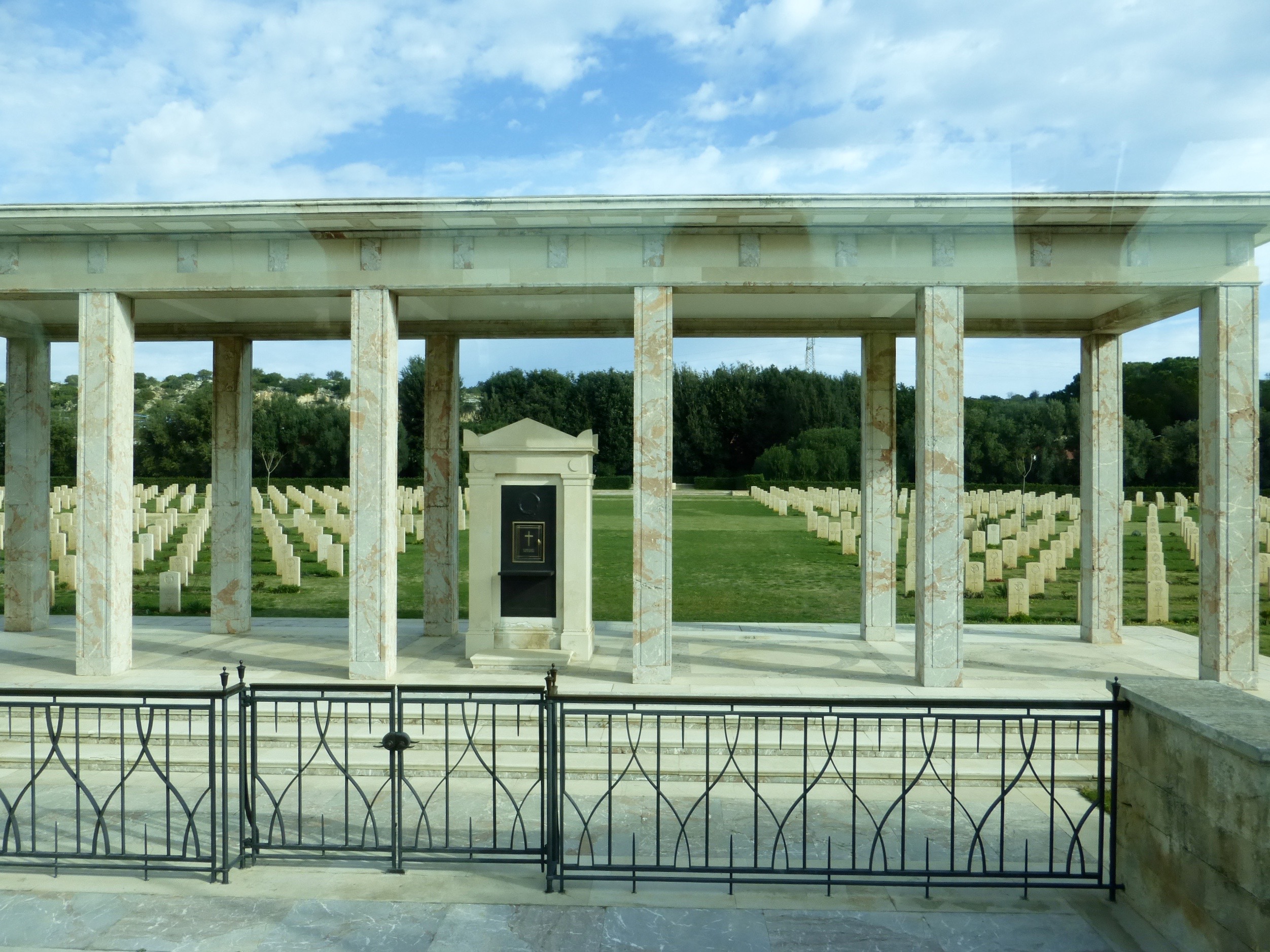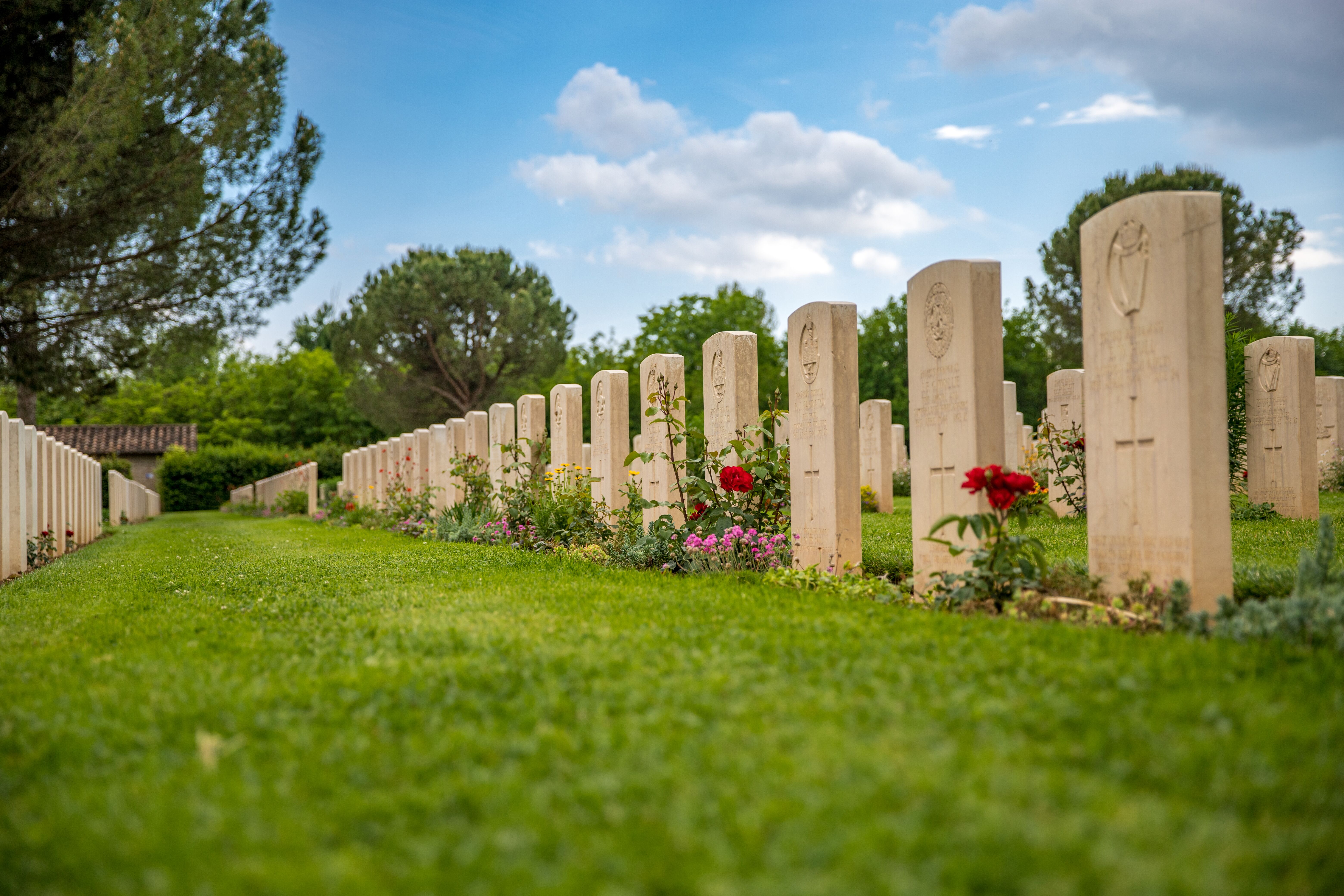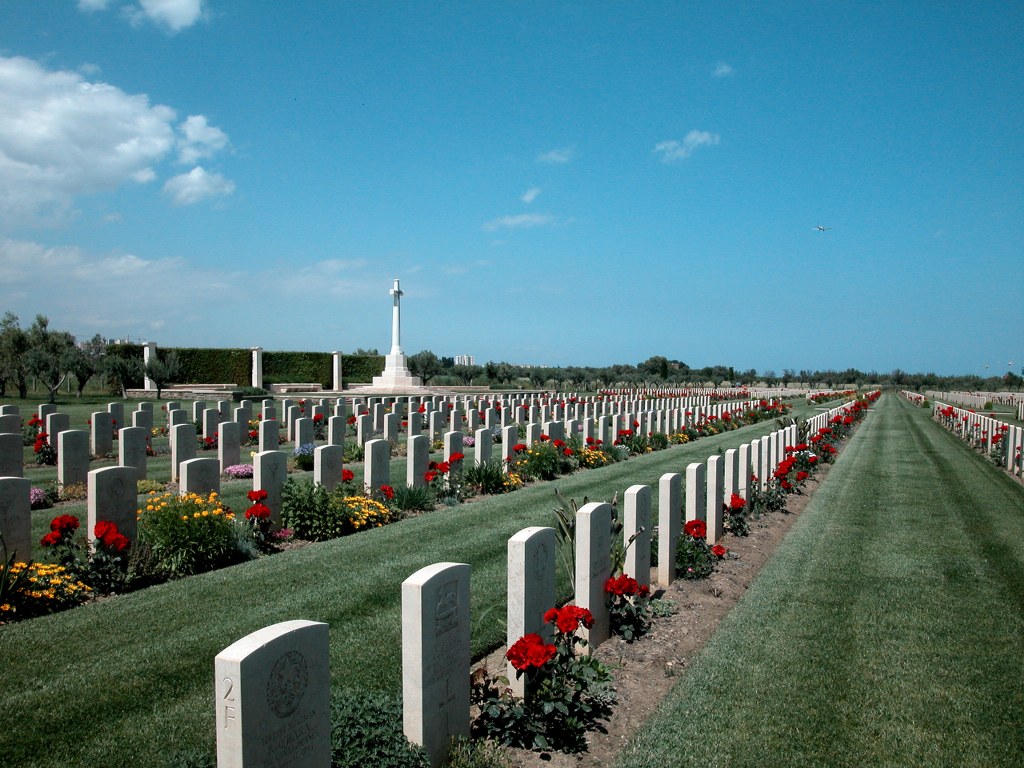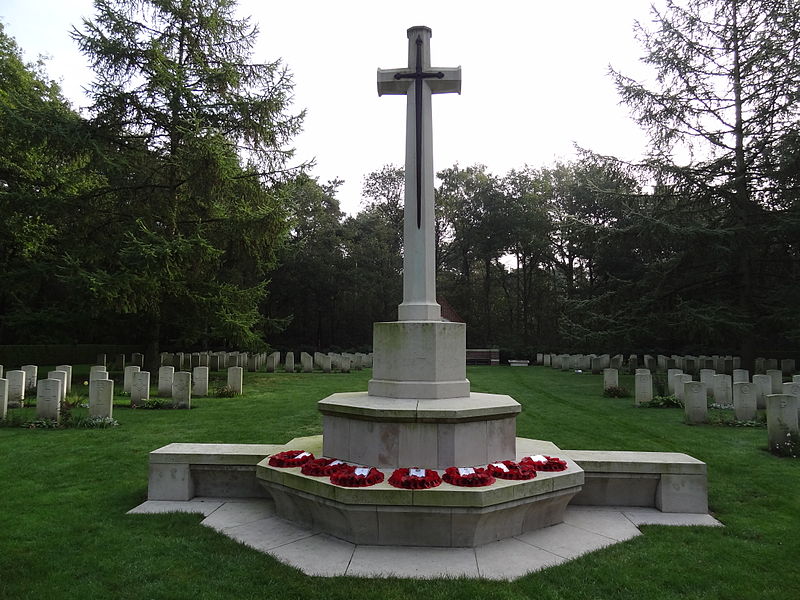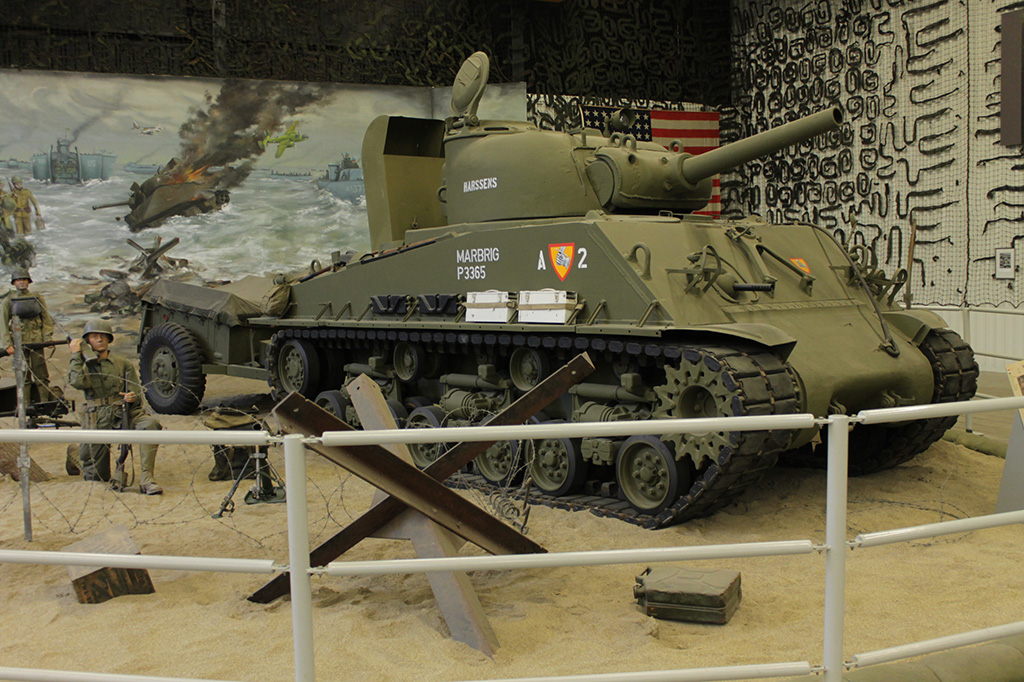
Rough Guides: Travel the Liberation Route Europe is a travel guide dedicated to remembrance sites and itineraries all over Europe.
Order your Rough Guides now!The route of British troops at the end of the Second World War started in July 1943 with the invasion of Sicily and mainland Italy. Then they trained in the United Kingdom for the D-Day landings and the invasion of Normandy, together with other allied troops. When the invasion was launched in June 1944, British troops were responsible for the area of Gold and Sword Beach. In September 1944, they took part in Operation Market Garden in the Netherlands. In December 1944, they fought in the Belgian Ardennes for the Battle of the Bulge.
This itinerary takes you to a number of significant historic sites built in those countries along the route followed by British troops. It ends in Berlin where the unconditional surrender of Germany was signed on 8 May 1945 in Berlin-Karlshorst.
During the allied invasion of Sicily (Operation Husky), the Eastern Task Force, led by Montgomery, consisted of the British Eighth Army, including as well the 1st Canadian Infantry Division. Upon arrival in Pachino, travel northwards along the coast in direction of Syracuse. On the way, see the former landing beach of Fontane Bianche and visit Syracuse Commonwealth military cemetery. In Catania, visit the Historical War Museum of the landings in Sicily and Catania Commonwealth cemetery. Travel to Taranto in mainland Italy.
Day 2While the British 8th Army was securing the toe of Italy at Reggio di Calabria, the British 1st Airborne Division landed at Taranto. Upon your arrival, travel north along the eastern coast towards the port of Bari. Explore the area around Foggia where the Eighth Army captured important airfield complexes. Further north in Torino di Sangro, visit the Sangro River War Cemetery to commemorate British and Indian soldiers who fell while defending the shoreline near the Sangro River against the retreating German soldiers. Continue towards Casoli.
Day 3Start exploring the Casoli Castle and The Wigram Hall. The latter features an exhibition room about the British officer Major Lionel Wigram who played a significant role in the training and actions of the Majella Brigade. To learn about the cooperation between British paratroopers and European populations who sheltered them during WWII, look at ‘The unexpected Alliance’ permanent exhibition. Continue towards Cassino and visit the Commonwealth war cemetery and Monte Cassino Abbey. Finally, head to Rome where you can visit another Commonwealth cemetery. Depart for the UK.
Day 4Begin in London with a visit to the Imperial War Museum and Churchill Cabinet War Rooms, where the London Control Section created several plans and strategies, including the one to mislead the German army about the location of the Allied invasion of Western Europe (Operation Fortitude). Continue with a visit to HMS Belfast and, further north, Bletchley Park where the cracking of the German Enigma played a vital role in the preparations leading up to D-Day. Depart for Dover in the Kent region.
Day 5As D-Day approached, extensive military preparations were made in the Kent area. Visit the Dover Castle from where the British broadcasted misleading radio signals. Explore Dungeness where one of wartime’s greatest feats of engineering took place: Operation Pluto. The operation intended to transport fuel under the channel to guarantee progression after D-Day. Travel towards the Hampshire region and the South Coast of England, a former hive of military activity in the run up to D-Day in June 1944.
Day 6Walk through the former significant base of operations at New Forest National Park where 12 airfields were formerly located, from where aerial support for the Normandy invasion took off. Check out the Mulberry Harbour construction site, designed to float over the Channel to France allowing more troops and supplies to land. Check out the Supreme Headquarters Allied Expeditionary Force (SHAEF HQ) at Southwick House before ending the day with a visit to Portsmouth’s D-Day Story museum. Travel to Normandy.
Day 7Walk through Gold beach where nearly 25,000 men of the British 50th Division landed on D-Day on 6 June 1944. Explore the area around Arromanches, the remains of the Mulberry Harbour and stop by the D-Day Museum to discover more about the technical prowess used in the fabrication of the artificial port of Arromanches in the UK. Head to the British military cemetery in Bayeux and end the day with a visit to the Memorial Museum of the Battle of Normandy.
Day 8Start at Sword Beach, the most eastern of the landing beaches, where the British 3rd Division came ashore and was hindered by bad weather and strong German resistance. Visit Ranville British military cemetery and the Pegasus Memorial that commemorates the commitment of the 6th Airborne Division in Normandy. Continue to the city of Caen and spend some time in the Caen Memorial Museum where you can experience WWII in all its complexity and scope. Travel to the Netherlands.
Day 9During Operation Market Garden in September 1944, British paratroopers were dropped near Arnhem to capture a bridge over the Rhine River. In Oosterbeek, visit the British war cemetery and the Airborne Museum ‘Hartenstein’ to learn about the Battle of Arnhem. Check out the Airborne Monuments in Arnhem and Ginkel Heath, and the Monument for the 7th battalion Royal Hampshire Regiment in Driel. Finally, visit Overloon’s War Museum and British cemetery, before heading towards Bastogne in Belgium.
Day 10In the winter of 1944-1945, approximately 55,000 troops of the British Army participated in the Battle of the Bulge. Upon arrival in Bastogne, visit the Bastogne War Museum and the La Roche Museum of the Battle of the Ardennes, which recalls the different stages and events of the battle. Head to Hotton Commonwealth cemetery where you can pay tribute to the British soldiers who fell in the region. Make your way through the Reichswald Forest in Germany.
Day 11Visit the Reichswald Forest Commonwealth cemetery in Kleve, a lasting reminder of the fighting that took place in the Rhineland during the last months of the war. Continue towards the north, stopping to visit the cities of Bremen, Luebeck, Wismar and Hamburg, all captured by British troops between April and May 1945. On 4 May 1945 at Lüneburg Heath, Montgomery accepted the official surrender of the German army in northwestern Europe. Head to Berlin to visit the Commonwealth cemetery and the German-Russian Museum, location of the unconditional surrender of Germany on 8 May 1945 in Berlin-Karlshorst. End of the tour.

